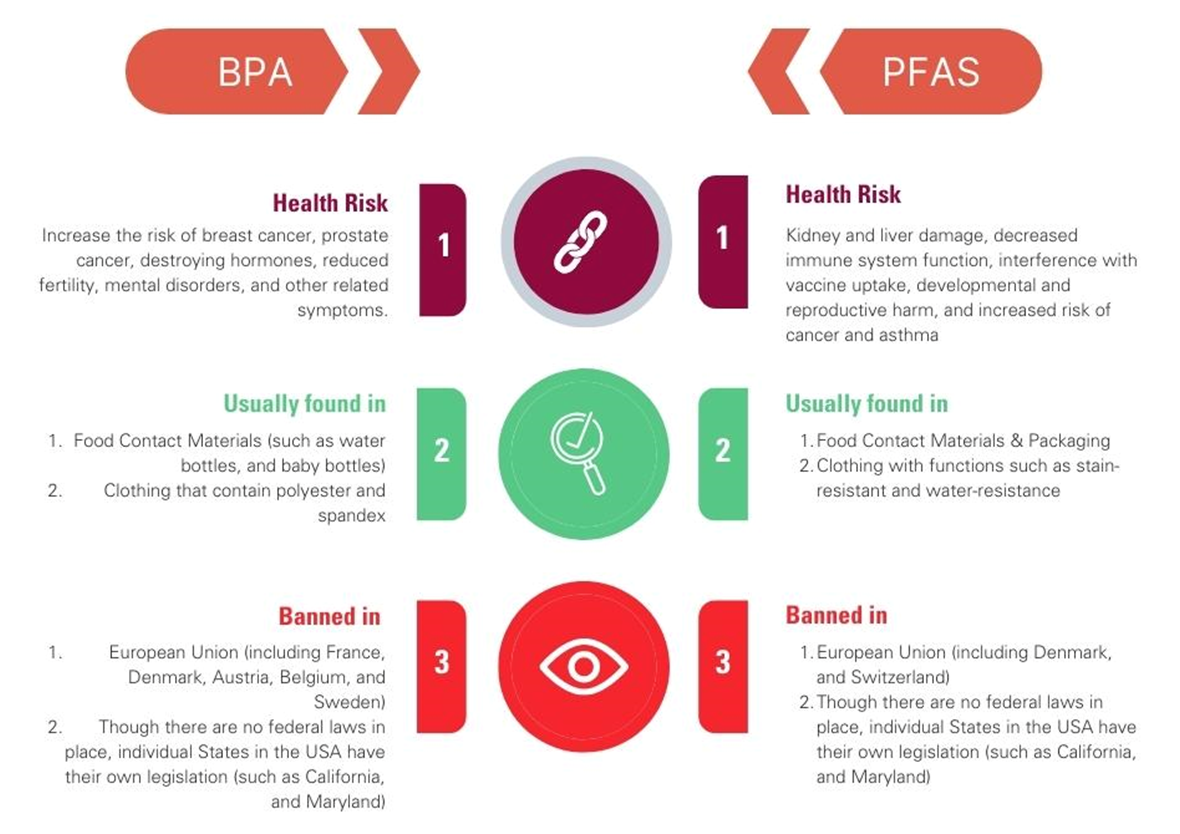Functional Wear & PFAS Series | The Hidden Hazards of Athletic Apparel: BPA and PFAS
2024.09.03
The athletic apparel industry has long relied on a variety of chemicals—some of which are toxic—to enhance performance features like sweat-wicking, stain resistance, and quick-drying capabilities. But what are the implications of these chemical choices for our health and the environment?
Are We Wearing Toxic Chemicals?
These toxic substances are so prevalent in consumer products that they have found their way into our bodies. How often do we consider what’s in our clothing?
Key Concerns: BPA and PFAS
Two chemicals currently under scrutiny are Bisphenol A (BPA) and Per-and polyfluoroalkyl substances (PFAS). What makes these substances particularly concerning, and why are they gaining worldwide attention?
Some key information can be found in the below:

The Ubiquity of PFAS in Our Wardrobe
Whether it’s a raincoat or a pair of yoga pants, PFAS are commonly used in our clothing, shoes, and accessories. But what are the environmental impacts of these chemicals?
These substances not only infiltrate the production process but also lead to significant pollution at every stage—from manufacturing facilities to garment factories. How does this contamination affect the air, water, and soil around us?
Direct Exposure: A Silent Threat
Products treated with PFAS can expose consumers during use. What risks do we face when wearing these chemically treated items?
Furthermore, PFAS-treated apparel that is eventually washed or disposed of can leak “forever chemicals” into the environment. What happens to these chemicals at the end of a product's life cycle?
The Global Ripple Effect
The pollution caused by these chemicals isn’t confined to one location; it travels globally through ocean waves and rain, impacting ecosystems far from their origin with wide-reaching effects.
Please subscribe and contact us at TIC Mall for more details.










